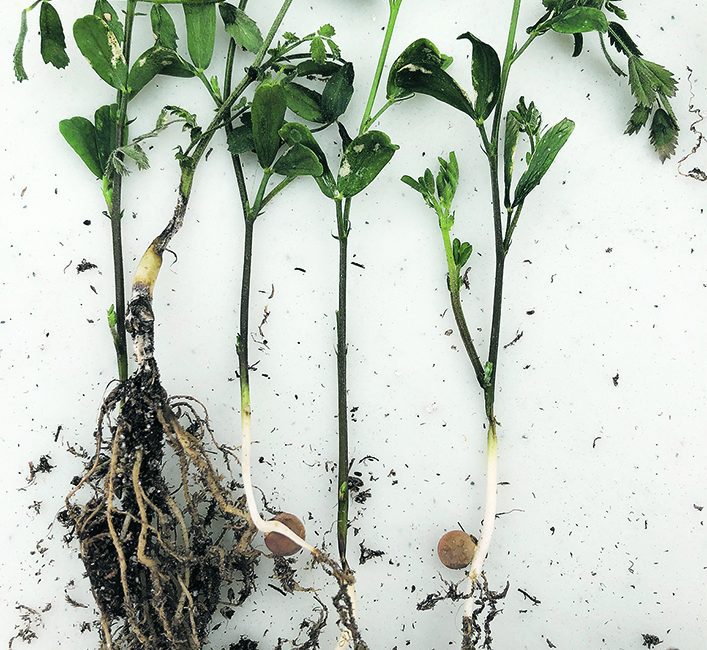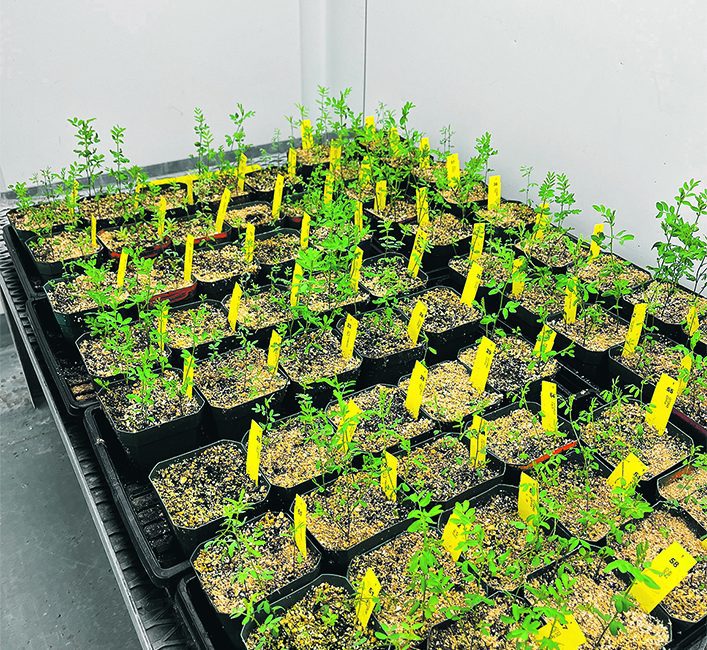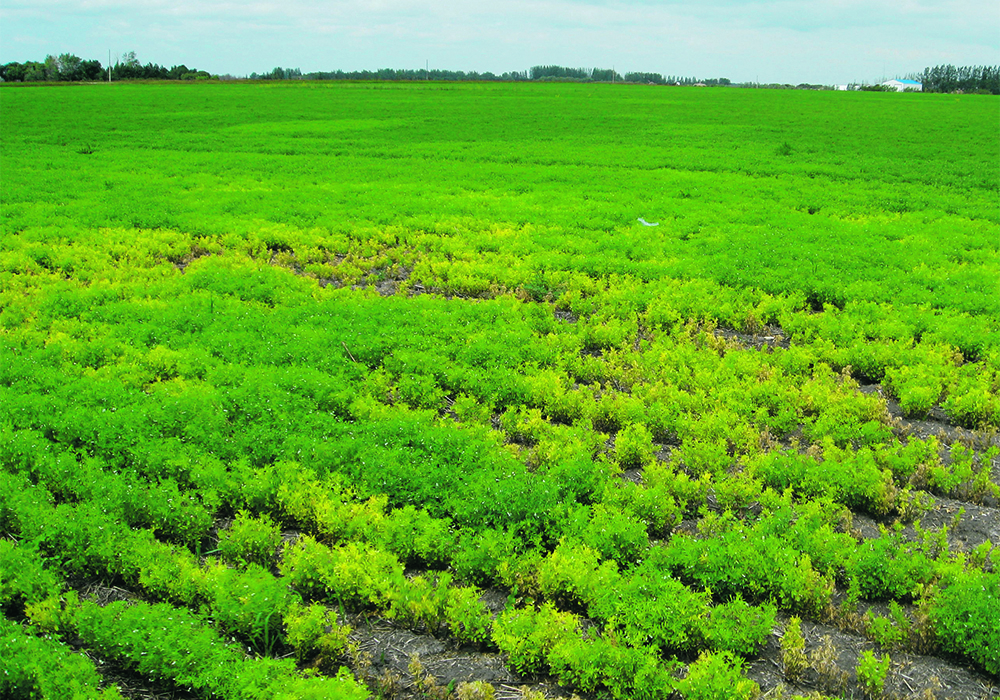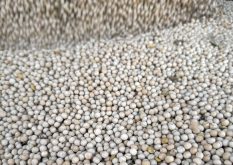Wild cousins of domesticated crops may hold the key to new genetic traits that could help crops thrive in various conditions or stave off diseases and insect pests.
Sabine Banniza is a professor at the University of Saskatchewan where she holds the Ministry of Agriculture Strategic Research Program (SRP) Chair in Pulse Crop Pathology. She has been exploring wild relatives of lentil to find root rot resistance in this pulse crop.
“Aphanomyces euteiches, Fusarium avenaceum and other fusarium species are the most important pathogens of concern, as are anthracnose in lentil, ascochyta blight in pea and chickpea, stemphylium blight and bacterial blight diseases in beans, but then also in the past, ascochyta blight of lentil,” Banniza said.
These are the most common plant pathogens in pulse crops today.
Though techniques such as gene editing are touted as being faster than conventional plant breeding, progress with disease resistance is limited because of the large number of genes at play which have to be identified and characterised first. For now, conventional breeding is used when working with domesticated and wild varieties but it can take 11 to 12 years to come up with a viable new cultivar, said Banniza.
Once the proper genes have been identified and crossed into the germplasm of a domesticated line, further field testing is carried out.

Eventually, it is evaluated in variety registration trials for two years, and pathologists and breeders vote on its merits. If it passes, the breeder can register it with the Canadian Food Inspection Agency as an official variety. Then it takes years to increase the seed supply of the new cultivar for the commercial market.
Making matters even more difficult is disease resistance sometimes breaks down within two to three years, depending on the rate of change within the pathogen.
For example, Banniza said, “If you think of Ascochyta rabiei, the fungus that causes ascochyta blight in chickpea, it’s a very dynamic pathogen. It has a sexual form and an asexual form and is also very virulent. If there is enough rain, the disease can spread really, really quickly and the more fungus out there the higher the risk of changes in the pathogen population.”
Powdery mildew in field peas has been an exception to short-lived genetic resistance. Resistance to this fungus has been strong for decades.

For root rot, there are no chemical solutions in pulses, so genetic resistance, developed with traditional breeding tools, holds the only real hope.
Gene editing is not considered genetic modification in many jurisdictions because no foreign genes from other organisms are introduced. Genes are “turned off” or “snipped out”, which is similar to what occurs in conventional breeding, only in a much shorter time.
However, in the U of S Crop Development Centre, “We do not use GM or gene-editing technology for cultivar development given customer and market sensitivities,” Banniza said.
Nevertheless, for those consumers who dislike the idea of artificial genetic changes of any kind, she said they must “understand that diseases can impact crops in a big way and reduce yields. If you have lower yields across large regions, that often results in higher food prices.”
Alternative crops could also provide some help.
“We are doing some work on faba beans because we are hoping that faba beans could become a good alternative to pea in the moister aphanomyces-infested areas.”
This is an updated version of the article that ran on page 36 of the August 31, 2023 issue of The Western Producer. Copy editing changes made to the story may have created an incorrect impression that Sabine Banniza, a crop pathology professor at the University of Saskatchewan, is a promoter of genetic modification and gene editing. In particular, a quote from her that was edited out of the original story said, “We do not use GM or gene-editing technology for cultivar development given customer and market sensitivities.” This quote has been included in the above article, which has also been further edited for clarity.
Read Also

Volatile temperatures expected for this winter
DTN is forecasting a lot of temperature variability in the Canadian Prairies this winter. Precipitation should be close to average.















